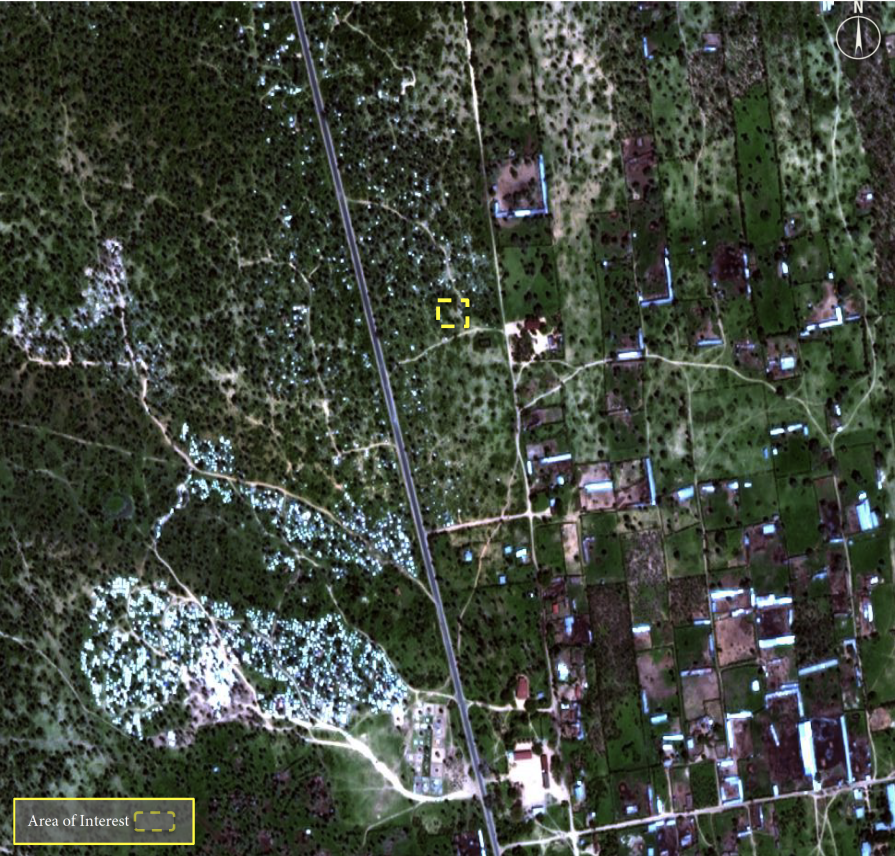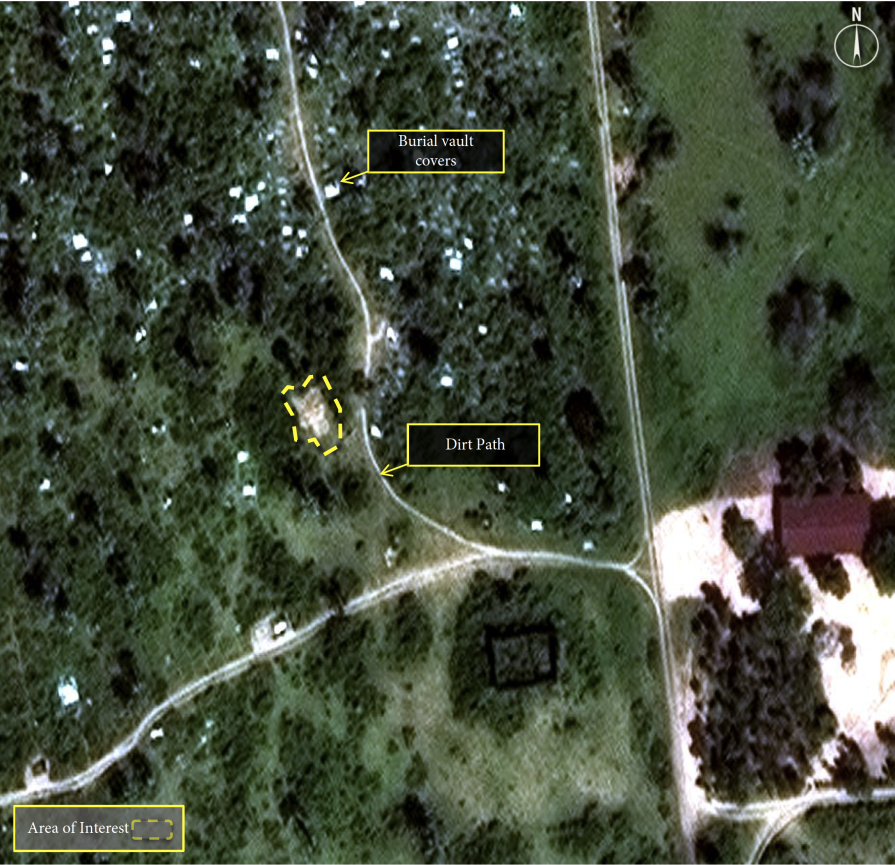Satellite Images Point Finger at Burundian Forces in Mass Killing
Early in the morning last Dec. 11, unidentified gunmen stormed three Burundian military bases — two in the capital of Bujumbura — and wounded a handful of soldiers. What followed were Burundi’s bloodiest hours since a coup attempt in the country last May.
Witnesses and humanitarian organizations accused government security forces of entering opposition neighborhoods and shooting civilians in the back of their heads. Burundian officials said the civilians were likely killed by rebels and claimed security forces took aim only at the attackers.
As many as 87 people — mainly Tutsis — lay dead, many in the streets and some with their hands still tied behind their backs. And by nightfall, many of the corpses had disappeared, their whereabouts remaining a mystery for more than a month.
But on Friday, Jan. 29, Burundi time, Amnesty International released satellite images it believes validate witness reports that security forces killed dozens of people, gathered their dead bodies, and dumped them into mass graves in and around Bujumbura.
In an interview with Foreign Policy, Amnesty analysts Scott Edwards and Christoph Koettl said suspicions over mass graves grew after dozens of the dead could not be tracked down at local morgues.
“We started with the really open question of ‘Where did all the bodies go?’” Koettl said. “And then we asked, ‘Can we use satellite imagery to document some of these suspected mass graves?’”
The answer to that second question turned out to be yes.
Using social media posts and witness accounts that described details of the Dec. 11 violence, the researchers began to piece together shreds of information about how the bodies went missing. The breakthrough came from an unidentified witness who visited — and filmed — a suspected mass-grave site in the Buringa area, 12 kilometers outside Bujumbura.
The three minutes of video footage, provided to Amnesty, showed a trail in a large field leading to an area filled with five mounds of dirt — which Edwards and Koettl believe are five separate mass graves.
The analysts studied the video frames for hours, searching for landmarks that satellites might be able to identify from above. An abandoned building and rows of coconut palms stuck out as their best bet.
The video footage indicated the large areas of disturbed dirt could be mass graves. But the analysts still had to prove that the earth had not been dug up before Dec. 11.
Eyewitness reports, as well as the abandoned building and other landmarks, helped the researchers pinpoint the exact coordinates of the site on Google Earth. Edwards and Koettl then reached out to DigitalGlobe, a company that deploys camera-equipped satellites around the world and keeps an archive of images available to purchase for research. Amnesty also asked DigitalGlobe to deploy another satellite to take new images of the site and compare the two sets of images.
Prior to the Dec. 11 massacre, the most recent DigitalGlobe image of the potential grave site was from early November. There was no evidence of disturbed earth. The new images, taken Dec. 22, proved there was.
Satellite imagery from November:
Satellite imagery from December:
That meant Edwards and Koettl had a rough timeline of when the area could have been dug up — a detail that is crucial for legitimacy in satellite-image research. Activists have used satellites to document atrocities since wars in Rwanda and Bosnia in the 1990s, but “generally what’s lacking is the bits of info, however small, from the ground that allow us to make those pinpoint determinations,” Edwards said.
In Burundi, Koettl said that wasn’t a problem: “It’s not just one satellite image — it’s video, we have ground research — and that combination makes this an exceptionally strong case.”
Since April 2015, at least 430,000 people have fled Burundi’s widespread and violent unrest, which was sparked by disputes over whether President Pierre Nkurunziza qualified for a third term. Nkurunziza won re-election with 69 percent of the vote in July.
At least 439 people have been killed, and more than 100 journalists have fled. Some who stayed behind are now dead; many others have reported intimidation. Recent reports indicate that the minority Tutsi population is being targeted by the Hutu-led government, which denies these claims.
Friday’s report is not the first suspicion to emerge in recent weeks of Burundian mass graves. On Jan. 15, U.N. human rights chief Zeid Ra’ad al-Hussein announced that the United Nations is investigating satellite imagery of nine mass-grave sites believed to hold dozens of bodies — all people he said were killed on Dec. 11. The area investigated by Amnesty for Friday’s report is just one of those nine sites and is alone believed to host five different mass graves. Amnesty has said it believes dozens are buried at the sites, but does not yet have a specific death count.
A main challenge in searching the suspected grave sites is the Burundian government’s unwillingness to allow foreign-led investigations inside the country. Bujumbura has said it would treat a suggested African Union (AU) peacekeeping force like an invading army.
Last week, U.S. State Department deputy spokesman Mark Toner told Foreign Policy that Washington does not trust officials in Bujumbura to conduct impartial investigations of human rights violations inside Burundi. But in a Thursday phone call with FP, Burundi’s ambassador to the United States, Ernest Ndabashinze, said his government is “responsible for our problems, and we want to be responsible for finding solutions.”
“It’s an occasion for us to say, ‘Oh, OK, people think there are mass graves,’” Ndabashinze told FP. “Let’s conduct an investigation and find out if it’s true or not.’”
On Jan. 20, Nkurunziza senior advisor Willy Nyamitwe told FP in an interview in Washington that he does not believe reports that Burundian security forces are raping and executing civilians. Two days later, Nyamitwe met with Linda Thomas-Greenfield, assistant secretary of state for African affairs.
At that meeting, according to a State Department official who spoke on condition of anonymity, Thomas-Greenfield told Nyamitwe that “independent reporting on the serious violence and human rights abuses perpetrated in Burundi, by all sides, should be as important to his government as it is to everyone else.”
In a later meeting with Deputy Assistant Secretary of State Steven Feldstein, who oversees human rights issues, Nyamitwe pledged to urge Burundian officials to allow AU monitors to investigate in the country, the State Department official said.
The African Union will meet this weekend in Addis Ababa, Ethiopia, to discuss next steps. Samantha Power, the American ambassador to the United Nations, visited Burundi last weekend and said she expects AU nations to push forward with a peacekeeper deployment.
But Ndabashinze said that when it comes to whether Burundi needs a peacekeeping force, Bujumbura and Washington continue to disagree. “We do not believe we need peacekeepers,” he said. “We don’t agree on that.”
Meanwhile, part of the urgency surrounding Amnesty’s report is fear that mass graves will be covered up by the Burundian government. “We’re obviously concerned about potential tampering of the graves,” Edwards said. He believes the graves hold the same bodies photographed on Bujumbura’s streets.
The next challenge will be getting to the suspected grave sites. It’s times like these, Edwards added, when it’s safer to document atrocities from hundreds of miles above.
“One of the benefits of satellite imagery is that it is unimpeachable,” he said. “Satellite imagery can’t be harassed or intimidated or disappeared.”
Photo credit: Amnesty International





